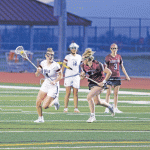Amendment 73 asks a long, complicated question – the best answer no
By Steve Miller

Amendment 73 would increase annual income taxes in Colorado by $1.6 billion. Those tax dollars would go into a separate fund and be exempt from all TABOR limits – and they would not be available for any purpose other than PreK-12 education.
There would be four additional income-tax brackets on top of the current 4.63 percent single rate for individual filers, along with a 30 percent increase in corporate income tax.
To stabilize school district property-tax revenues, the writers of the amendment went into the property-tax laws and did some embellishing there, too. They should have stopped with the income tax.
The Gallagher Amendment, passed in 1982, is the foundation of our property-tax system. Gallagher specifies 45 percent of all property taxes paid statewide are paid on residential properties and 55 percent are paid on nonresidential properties. That 45:55 proportion is the “Gallagher ratio.”
Residential properties are where people live: single-family homes, condos and townhouses, mobile homes, apartments, etc. Nonresidential property is everything else: commercial, industrial, vacant land, agricultural, oil and gas, mining, and business personal property.
The Gallagher assessment rate on nonresidential property is 29 percent. The Gallagher assessment rate on residential property is adjusted periodically by the legislature to maintain the 45:55 balance of property tax burden. The residential assessment started out at 21 percent in 1982 and has fallen over the years to 7.2 percent. It is projected to fall to 6.11 percent in the 2019 reappraisal. The economic theory underpinning Gallagher has proven a bit wobbly over time.
The actual value of a property is multiplied by an assessment rate to calculate the assessed value of the property. The assessed value is multiplied by the mill levy to calculate property tax on the property.
Half of all property taxes in Colorado go to school districts and half goes to all other taxing authorities: counties, cities and towns, library districts, water districts, fire districts, and health districts, among others.
Amendment 73 sets up a separate property-tax system for school-district taxes. Literature supporting the amendment claims only school district property taxes are affected by the changes, and property taxes levied by other taxing authorities would be unaffected. That isn’t necessarily so.
Here’s the problem: nothing in Amendment 73 exempts its assessed values from the calculations that maintain the Gallagher ratio.
Amendment 73 fixes its assessment rate on nonresidential property at 24 percent and its assessment rate on residential property at 7 percent. Neither rate is adjustable.
So, we would have two assessed values on every piece of property in Colorado. Nonresidential properties would be assessed at both 29 percent and at 24 percent. Residential properties would be assessed at 7 percent and also at whatever the adjustable Gallagher rate is calculated to be (currently 7.2 percent).
Because all nonresidential properties would be assessed at both 24 percent and 29 percent, instead of only at 29 percent, the total assessed value of nonresidential property in the state would drop by 8.6 percent.
To preserve the balance of the Gallagher ratio, the total assessed value of all residential property in the state would likewise have to drop by 8.6 percent.
Cranking through the assessment math, and including the effects of the new Amendment 73 assessment ratios, shows the assessed values and property tax revenues of taxing authorities that are not school districts would be significantly reduced – contrary to what the amendment’s proponents advertise.
Recalculating the assessed property values that led to the residential assessment rate of 7.2 percent in the 2017 reappraisal, with the two assessment rates on nonresidential property and the new fixed ratio of 7 percent on residential property, results in a lower assessment rate on residential properties taxed by non-school district authorities. The Gallagher rate would be 6.16 percent, not 7.2 percent – and that would mean a major reduction in property tax revenues from residential properties for non-school-district authorities.
As it turns out, the only way to adjust for the amendment’s reduced assessment rate on nonresidential properties is to drop the adjustable Gallagher residential rate for non-school-district levies. That’s a head scratcher.
Amendment 73 alone doesn’t cause the mess of assessment rates and unintended repercussions. The problems began with Gallagher.
The legislature is attempting to address problems with Gallagher that have confounded local taxing authorities for years, especially those in rural counties where the real estate markets have not been as robust as the markets along the Front Range, and where the residential property tax bases have been eroding for years.
Amendment 73 is too big and needlessly complicated, and it makes Gallagher-related problems worse. Amendment 73 is not a good funding plan for public schools in Colorado. Voters should take a pass on it this year.
- September, 21 2017

Berthoud area resident John Goreski t...
By Shelley Widhalm The Surveyor As a custom woodworker, Berthoud area resident John Goreski has...
- March, 24 2016

Heron Lakes rezone approved
By Rudy Hemmann The Surveyor The applicant, Heron Lakes LLC, won approval of a rezone...
- September, 27 2018

Berthoud teen makes miraculous recovery
By Amber McIver-Traywick The Surveyor Susan Kaczmarek got the phone call that every parent fears...
- August, 15 2019

Air quality on the Front Range fails ...
By Amber McIver-Traywick The Surveyor The U.S. Environmental Protection Agency (EPA) is proposing to reclassify...
- May, 29 2020

Graduation messages from Kyle and Jac...
By Jacob Isley Throughout my career at Berthoud High School, I have not managed to...
- April, 10 2020

Board games provide old-school form o...
By Aaron Reynolds The Surveyor Americans spend more than 11 hours per day watching, reading,...

POLICEBLOTTER
Community News
Northern Water sets C-BT quota at 70% for 2024
Community News

Emotions run high during Revere Property hearing
Community News
Snowpack at 119% above normal
Community News

Karspeck to serve third term as Berthoud mayor
Community News

OPINION – No bitchin’ allowed
Community News
Roy Tripi to become principal of BHS on July 1
Community News
COMMUNITY CALENDAR:
Community Calendar – add an event
Homestead Fine Art Gallery First Fridays OPEN HOUSE
03 May 4:00 PM - 7:00 PM
Homestead Fine Art Gallery First Fridays OPEN HOUSE
07 Jun 4:00 PM - 7:00 PM
Homestead Fine Art Gallery First Fridays OPEN HOUSE
05 Jul 4:00 PM - 7:00 PM
Homestead Fine Art Gallery First Fridays OPEN HOUSE
02 Aug 4:00 PM - 7:00 PM
Homestead Fine Art Gallery First Fridays OPEN HOUSE
06 Sep 4:00 PM - 7:00 PM
Homestead Fine Art Gallery First Fridays OPEN HOUSE
04 Oct 4:00 PM - 7:00 PM

